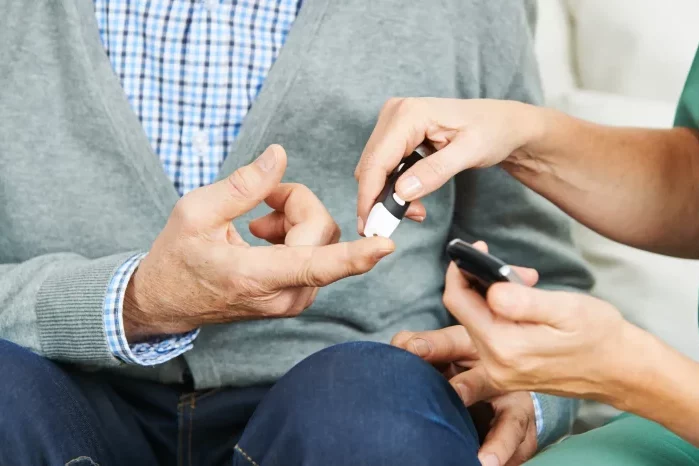Blood glucose testing is a cornerstone of diabetes management and plays a crucial role in both diagnosis and long-term monitoring. As diabetes continues to impact millions of people worldwide, understanding the fundamentals of glucose testing becomes vital not only for those living with the condition but also for healthcare professionals, caregivers, and individuals seeking preventive care.
Glucose testing offers a window into how the body processes sugar, reflecting how effectively insulin—a hormone produced by the pancreas—functions in regulating blood glucose. For people with diabetes, maintaining optimal glucose levels is central to avoiding complications such as cardiovascular disease, kidney damage, vision problems, and nerve damage. In this article, we will explore what glucose testing is, the different types of tests available, how they are performed, when and why they are used, and how results are interpreted.
What is Blood Glucose?
Blood glucose, or blood sugar, refers to the concentration of glucose present in the bloodstream. Glucose is a simple sugar derived from the carbohydrates we eat. It serves as the body’s primary source of energy and is essential for cellular function.
When food is digested, carbohydrates are broken down into glucose, which then enters the bloodstream. Insulin helps cells absorb glucose for energy or storage. In individuals with diabetes, this process is impaired—either due to inadequate insulin production (Type 1 diabetes), insulin resistance (Type 2 diabetes), or both. Without proper glucose regulation, blood sugar levels can rise too high (hyperglycemia) or fall too low (hypoglycemia), both of which can be dangerous.
What is Glucose Testing?
Glucose testing is a method of measuring the amount of glucose in the blood. It is used to detect abnormal blood sugar levels and to monitor the ongoing management of diabetes. The goal of glucose testing is to assess how well the body is managing blood sugar, determine if treatment is effective, and help adjust medication, diet, and lifestyle accordingly.
Glucose testing can be done through laboratory tests ordered by healthcare providers or through home-based monitoring devices. The tests may involve fasting, random measurements, or postprandial (after eating) assessments, each offering specific insights into glucose regulation.
Why is Glucose Testing Important?
Glucose testing serves several essential functions:
Diagnosis of Diabetes and Prediabetes: It helps in diagnosing conditions like Type 1 diabetes, Type 2 diabetes, and gestational diabetes.
Monitoring of Diabetes: For individuals with diabetes, regular testing is vital for maintaining optimal blood sugar levels and avoiding complications.
Guiding Treatment Decisions: Test results influence changes in medication, insulin dosage, dietary habits, and physical activity levels.
Detection of Hypoglycemia or Hyperglycemia: Immediate testing can identify dangerously low or high glucose levels, guiding urgent treatment.
Preventive Health: In individuals at risk—such as those with a family history of diabetes or obesity—routine testing can prompt early lifestyle changes to prevent or delay disease onset.
Types of Glucose Testing
Glucose testing can be broadly divided into two categories: laboratory-based diagnostic tests and self-monitoring methods. Below are the most common types of glucose tests used in clinical and home settings.
1. Fasting Blood Glucose (FBG) Test
The fasting blood glucose test measures blood sugar levels after the individual has not eaten or drunk anything (except water) for at least 8 hours. It is typically performed in the morning and is often the first test used to screen for diabetes or prediabetes.
Normal: Less than 100 mg/dL (5.6 mmol/L)
Prediabetes: 100–125 mg/dL (5.6–6.9 mmol/L)
Diabetes: 126 mg/dL (7.0 mmol/L) or higher on two separate occasions
This test is simple, cost-effective, and widely used.
2. Oral Glucose Tolerance Test (OGTT)
The OGTT evaluates the body’s response to sugar. After an initial fasting glucose measurement, the patient drinks a standardized glucose solution (usually containing 75 grams of glucose). Blood sugar levels are then measured at intervals—commonly at 1 hour and 2 hours after ingestion.
Normal 2-hour reading: Less than 140 mg/dL (7.8 mmol/L)
Prediabetes: 140–199 mg/dL (7.8–11.0 mmol/L)
Diabetes: 200 mg/dL (11.1 mmol/L) or higher
OGTT is especially useful for diagnosing gestational diabetes during pregnancy.
3. Hemoglobin A1c (HbA1c) Test
Unlike other tests that reflect current glucose levels, the A1c test provides an average of blood glucose control over the past two to three months. It measures the percentage of hemoglobin proteins in the blood that are glycated (coated with sugar).
Normal: Below 5.7%
Prediabetes: 5.7%–6.4%
Diabetes: 6.5% or higher
A1c testing is widely used in long-term diabetes management and is recommended every three to six months for those with diabetes.
4. Random Blood Glucose Test
This test checks blood glucose at any time of day, regardless of when the person last ate. It is useful in emergency situations or when symptoms of diabetes (such as excessive thirst, fatigue, or frequent urination) are present.
A result of 200 mg/dL (11.1 mmol/L) or higher, especially in the presence of symptoms, may indicate diabetes.
5. Continuous Glucose Monitoring (CGM)
CGM systems are wearable devices that measure glucose levels in real-time, typically through a tiny sensor inserted under the skin. They provide continuous data throughout the day and night, tracking trends and fluctuations.
CGMs are particularly valuable for:
-
Individuals with Type 1 diabetes
-
Those experiencing frequent hypoglycemia
-
Athletes and children with diabetes
-
Patients seeking tight glucose control
These systems can alert users when levels are too high or too low, improving daily management and reducing risk.
6. Self-Monitoring of Blood Glucose (SMBG)
SMBG refers to finger-prick testing using a portable glucometer. It allows individuals to measure their blood glucose at home, at work, or on the go. Most glucometers provide results within seconds and require only a small drop of blood.
The frequency of SMBG depends on the type of diabetes, treatment regimen, and individual needs:
Type 1 diabetes: Often 4–10 times daily
Type 2 diabetes (insulin users): Usually 2–4 times daily
Type 2 diabetes (non-insulin users): As recommended, often a few times per week
When Should Glucose Testing Be Performed?
Timing of blood glucose testing can vary depending on individual health conditions and treatment plans. However, some general recommendations include:
Fasting (before breakfast): To assess baseline glucose control
Before meals: To determine appropriate insulin doses
1–2 hours after meals: To monitor postprandial spikes
At bedtime: To avoid nocturnal hypoglycemia
During physical illness or stress: These can raise blood sugar unpredictably
After changes in medication or diet: To assess how the body is responding
Pregnant women with gestational diabetes may require more frequent testing, sometimes up to 6 times daily.
Factors That Affect Glucose Test Results
Several variables can influence the accuracy of glucose test results:
Food and Drink: Carbohydrate intake prior to testing significantly affects readings.
Physical Activity: Exercise can lower blood sugar levels for several hours post-activity.
Medications: Some drugs, including steroids and beta-blockers, may elevate blood sugar.
Stress and Illness: These can temporarily raise glucose levels.
Testing Technique: Improper sample collection or expired test strips may skew results.
To ensure accurate readings, it is essential to follow test protocols carefully and consult healthcare providers for any inconsistencies.
Benefits of Regular Glucose Testing
Routine glucose monitoring offers several clinical and personal advantages:
-
Promotes better glycemic control
-
Allows for early detection of complications
-
Guides timely treatment adjustments
-
Provides data to evaluate lifestyle changes
-
Empowers patient self-management
-
Reduces hospitalizations and long-term healthcare costs
Individuals who actively engage in self-monitoring tend to have better A1c outcomes and report improved quality of life.
Challenges and Considerations in Glucose Testing
Despite its advantages, glucose testing comes with certain challenges:
Testing Fatigue: Frequent pricking or CGM wear can lead to burnout.
Cost and Access: Glucometers, CGMs, and test strips may be costly, especially without insurance.
User Error: Mistakes in timing, technique, or calibration can affect results.
Data Overload: Interpreting continuous glucose data can be overwhelming without proper guidance.
Healthcare teams should work closely with patients to overcome these hurdles and tailor glucose monitoring to individual needs.
Emerging Technologies in Glucose Testing
Advancements in technology are transforming glucose monitoring. Innovations include:
-
Non-invasive glucose monitors (e.g., skin sensors, optical devices)
-
Implantable CGMs that last for months
-
Smartphone-compatible glucometers
-
Integrated insulin pumps and CGMs (artificial pancreas systems)
Such tools are enhancing accuracy, reducing discomfort, and paving the way for personalized diabetes care.
Conclusion
Glucose testing remains one of the most powerful tools in the prevention, diagnosis, and management of diabetes. With a variety of methods available—from traditional lab-based tests to high-tech continuous monitors—individuals and healthcare providers have more resources than ever to maintain optimal blood sugar control.
However, effective glucose testing goes beyond just numbers. It involves understanding the context of readings, recognizing trends, and taking proactive steps based on results. Whether you are newly diagnosed, at risk, or supporting someone with diabetes, staying informed about glucose testing is a key step toward better health and a higher quality of life.
Related topics:
What Is a Good Reading for Diabetics?



























